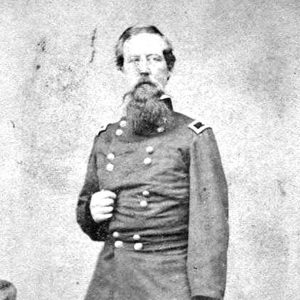calsfoundation@cals.org
Clarendon Expedition (August 4–17, 1862)
| Location: | Monroe County |
| Campaign: | None |
| Dates: | August 4–17, 1862 |
| Principal Commanders: | Brigadier General Alvin P. Hovey (US); Unknown (CS) |
| Forces Engaged: | Fourth Division, Army of the Southwest (US); Unknown guerrillas identified as “Texas Rangers” (CS) |
| Estimated Casualties: | 3 killed, 2 wounded (US); Unknown (CS) |
| Result: | Union victory |
The Clarendon Expedition of August 4–17, 1862, resulted in the Union’s capture of the city of Clarendon (Monroe County). Subsequently, Clarendon’s location as a port on the White River served as a component of the Union’s river campaign that led to the fall of Little Rock (Pulaski County), and Clarendon served as an important troop and supply line to Federal forces in Arkansas.
Brigadier General Alvin P. Hovey had been placed in charge of an expedition to operate along the Arkansas River in preparation for the upcoming campaign to capture Arkansas’s capital, Little Rock. He was commanded by Brigadier General Frederick Steele to take the Fourth Division of the Army of the Southwest from Helena (Phillips County) to Clarendon. Before Hovey and his men even got beyond Phillips County, they encountered a group of guerrillas they dubbed “Texas Rangers” in a thicket known as Patterson’s Deadning; however, a brief firefight resulted in their fleeing.
Hovey arrived in Clarendon on August 7. The Union force saw some enemy pickets on the opposite side of the White River and drove them back with some shelling. During their stay, several Union expeditions proceeded out from Clarendon, driving Confederate forces to Des Arc (Prairie County) and Cotton Plant (Woodruff County). Hovey expressed an interest in proceeding on to Little Rock, but he began marching back to Helena on August 13. Three men were killed and two wounded during the expedition. Confederate casualties were not recorded.
Though Hovey would not be able to fulfill his ambitions of proceeding to Little Rock in 1862, Clarendon did serve as an important jumping-off point for the campaign that would eventually capture the capital city. On August 10, 1863, Steele’s forces arrived in Clarendon and camped there until August 23, 1863, in preparation for the taking of Little Rock, which was achieved on September 10, 1863. In addition, several other military engagements were reported at or near Clarendon, which emphasizes the importance of the river city to both sides of the conflict. The most notable engagement occurred in June 1864, during which Confederate general Joseph Shelby and his cavalry attacked a Union steamer, the Queen City, docked at Clarendon, and then relieved the ship of its supplies and arms before sinking it. After the Union forces returned to Clarendon from their unsuccessful pursuit of Shelby on June 29, 1864, they ordered the town burned to deprive the Confederates of cover for future harassment along the White River at Clarendon. There were no further reported attempts by Confederate forces to retake the Clarendon port.
For additional information:
“General Hovey, a Profile.” Harper’s, December 1, 1863.
The War of the Rebellion: A Compilation of the Official Records of the Union and Confederate Armies. Series I, Vol. 13, pp. 206–207. Washington DC: Government Printing Office, 1885.
William R. Mayo
Fayetteville, Arkansas

 ACWSC Logo
ACWSC Logo  Alvin P. Hovey
Alvin P. Hovey  Clarendon Civil War Marker
Clarendon Civil War Marker 



Comments
No comments on this entry yet.